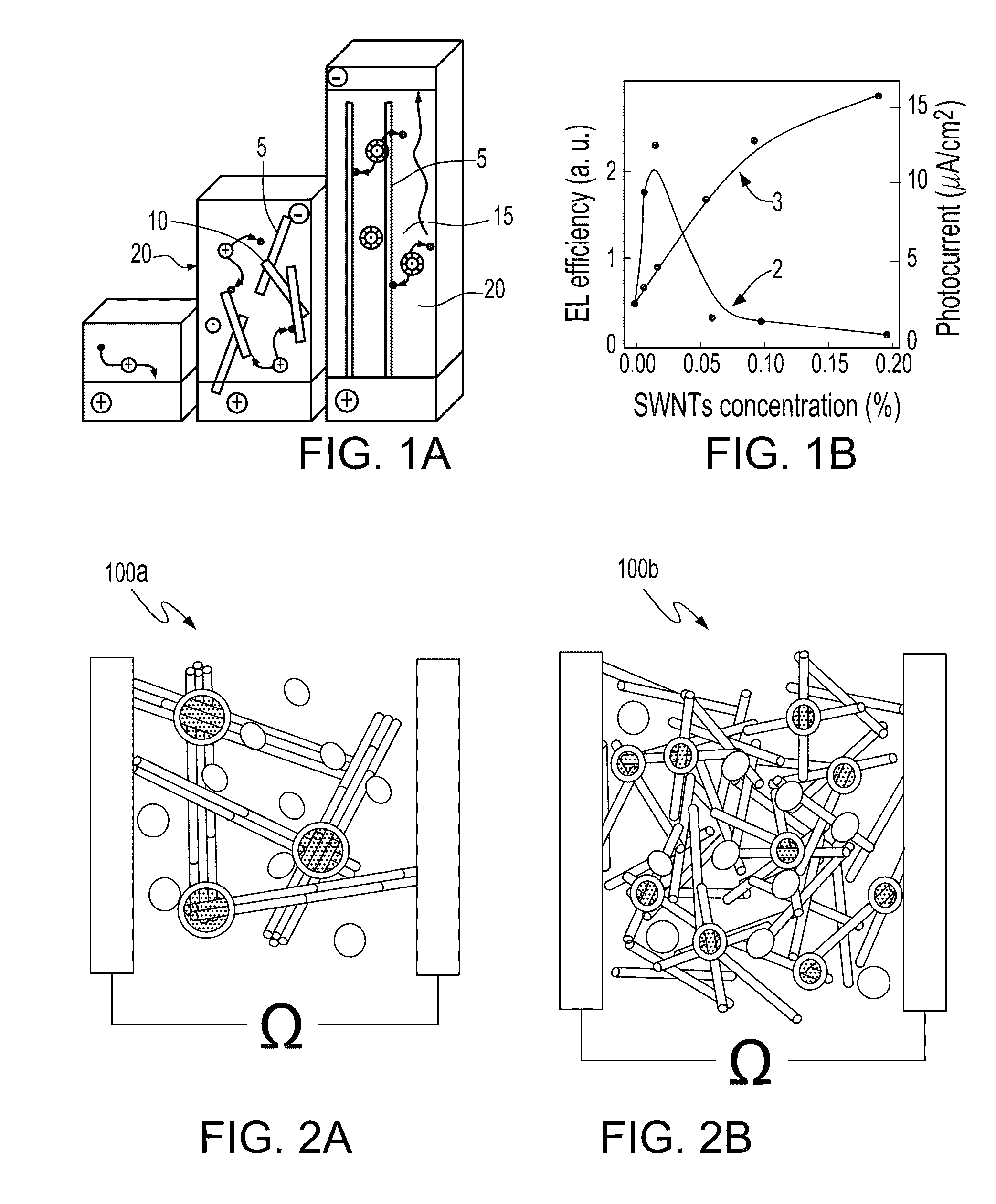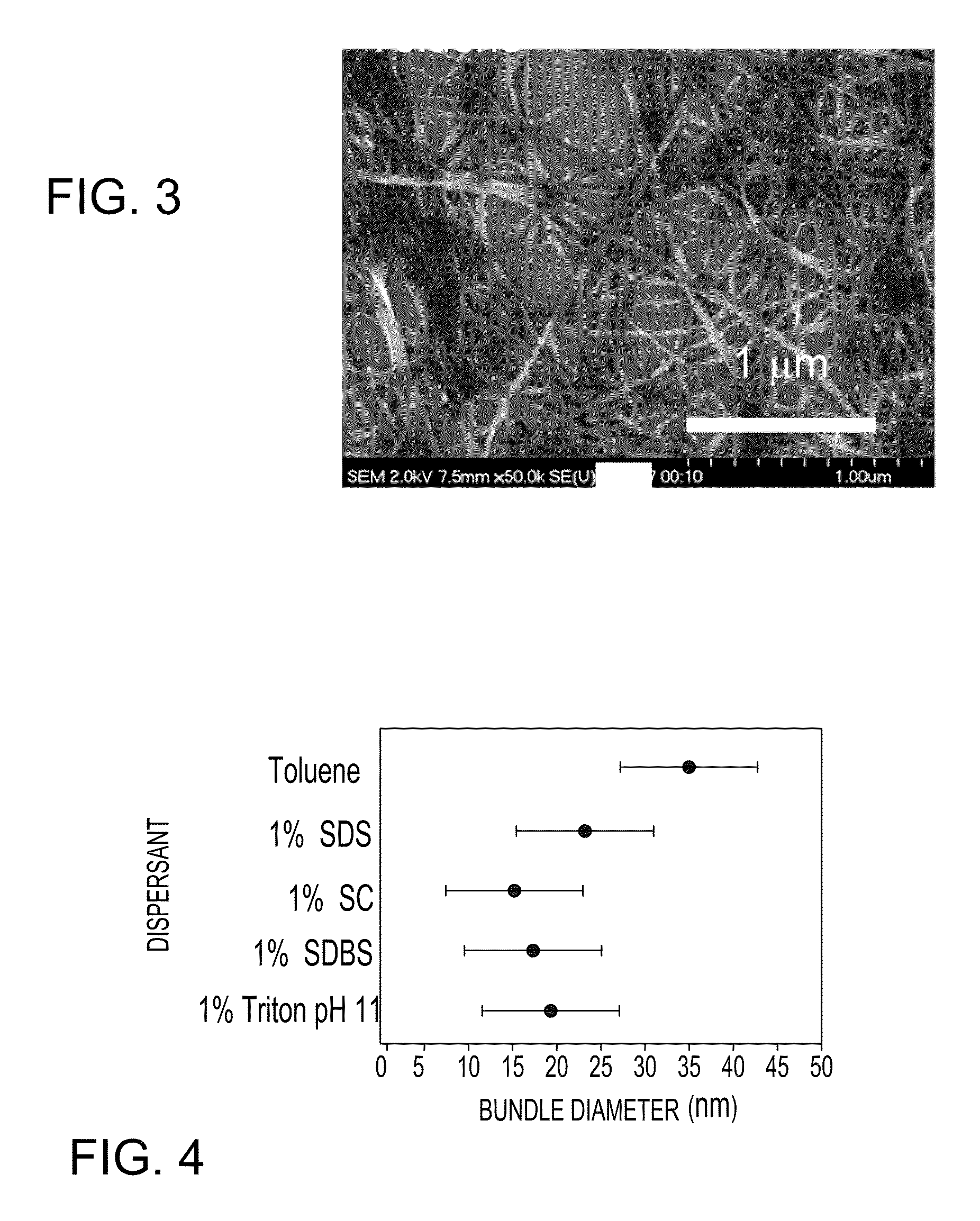Transparent conductive nano-composites
a technology of transparent conductive nano-composites and composite materials, applied in the field of composite materials, can solve the problems of high processing temperature and inflexibility of fabrication, and achieve the effect of reducing the bundle size of carbon nanotubes
- Summary
- Abstract
- Description
- Claims
- Application Information
AI Technical Summary
Benefits of technology
Problems solved by technology
Method used
Image
Examples
examples
[0121]Single wall nanotubes were synthesized by laser vaporization and purified by dilute HNO3 reflux / air oxidation procedure. A conjugated polymer poly(2-methoxy-5-(2′-ethylhexyloxy)-1,4-phenylenevinylene)(MJEHPPV) was provided having a molecular weight of 51,000 and a polydispersity of 1.1. To obtain uniform dispersion of the SWNTs in the MEHPPV, two solvents: ortho-dichlorobenzene (ODCB) and chloroform (CHCI3) were used first to suspend the SWNTs and dissolve the MEHPPV, respectively, under ultra-sonication.
[0122]In a following process step, the SWNT and MEHPPV solutions were mixed to formulate the SWNT / MEHPPV composite solutions at designed doping concentrations. 80 nm thick light-emitting films were spin cast from the composite solutions on indium-tin oxide (ITO) substrates with the resistance of 10 ohm / square. Single-layer LEDs of SWNT / MEHPPV composites were fabricated with an architecture of ITO / composite / Al by thermally evaporating aluminum (Al) electrode on the spin-cast th...
PUM
| Property | Measurement | Unit |
|---|---|---|
| thickness | aaaaa | aaaaa |
| diameter | aaaaa | aaaaa |
| thick | aaaaa | aaaaa |
Abstract
Description
Claims
Application Information
 Login to View More
Login to View More - R&D
- Intellectual Property
- Life Sciences
- Materials
- Tech Scout
- Unparalleled Data Quality
- Higher Quality Content
- 60% Fewer Hallucinations
Browse by: Latest US Patents, China's latest patents, Technical Efficacy Thesaurus, Application Domain, Technology Topic, Popular Technical Reports.
© 2025 PatSnap. All rights reserved.Legal|Privacy policy|Modern Slavery Act Transparency Statement|Sitemap|About US| Contact US: help@patsnap.com



